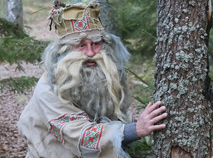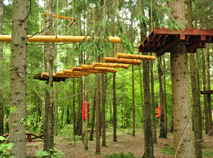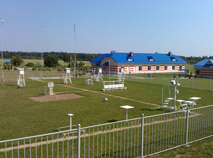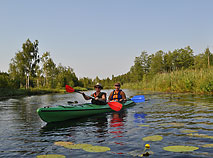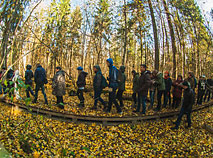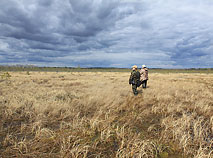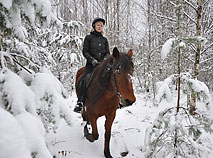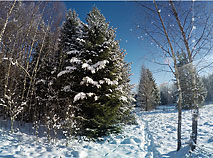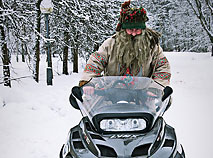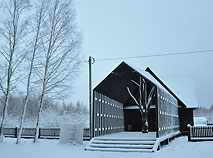Berezinsky Biosphere Reserve
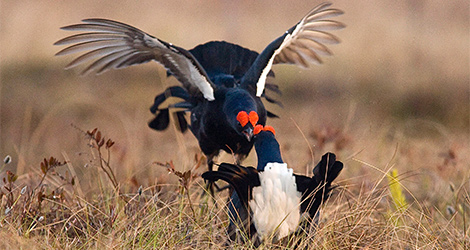
The Berezinsky Biosphere Reserve is the gem of the Belarusian Poozerye (Lake District), one of the oldest protected areas in Belarus of the highest rank. It has gained international fame as a model of undisturbed wilderness not only of the CIS but also all over Europe.
Today there are only two reserves in Belarus: Berezinsky Biosphere Reserve and the Polesie State Radioecological Reserve. Set up in the wake of the man-made environmental disaster, the Polesie reserve is a place of rehabilitation and research. It is virtually closed to tourists. The Berezinsky Biosphere Reserve is a protected area of untouched diverse wildlife which began to take shape thousands of years ago after the meltdown of the ancient glaciers. And it is open to visitors!
The reserve is home to four types of ecosystems: forests, rivers, meadows and deep bogs. Wetlands cover about 60% of the territory of the reserve and are part of the natural riches of Belarus, thanks to which the country is called "the lungs of Europe". It is not just words: more than 2.5 million hectares of wetlands in Belarus (11.5% of the country’s territory) play a crucial role in maintaining the biosphere and microclimate of the region.
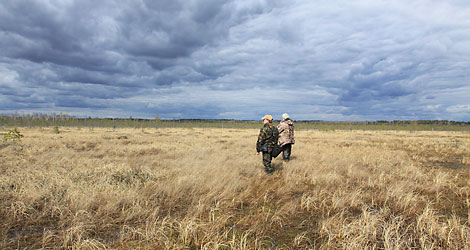 To date, 1,348 bogs or about 863,000 hectares have survived in the country in the natural or near-natural state. It was precisely the Berezinsky Biosphere Reserve that became one of the first conservation areas important for the protection of the wetland ecosystems of Belarus.
To date, 1,348 bogs or about 863,000 hectares have survived in the country in the natural or near-natural state. It was precisely the Berezinsky Biosphere Reserve that became one of the first conservation areas important for the protection of the wetland ecosystems of Belarus.
Learn more about the nature of Belarus
However, wetlands are not the only treasures of the Berezinsky reserve. For example, today it is the only place, not only in Belarus but also across the continent, that is home to the famous Europe’s Big 5 - European bison, moose, bear, wolf, and lynx. Only here you can see all of them at the same time.
History of Berezinsky Biosphere Reserve
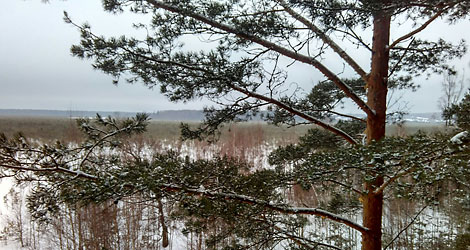 The history of the reserve began with one person. After the First World War an expedition led by BSU Professor Anatoly Fedyushin found around 20 colonies of the beaver, previously thought extinct, in the upper Berezina River. The animal was heavily hunted due to the expensive fur and virtually disappeared in Belarus. In Berezinsky scientists also found the specimens of bear, elk, wild boar, wood grouse, white grouse.
The history of the reserve began with one person. After the First World War an expedition led by BSU Professor Anatoly Fedyushin found around 20 colonies of the beaver, previously thought extinct, in the upper Berezina River. The animal was heavily hunted due to the expensive fur and virtually disappeared in Belarus. In Berezinsky scientists also found the specimens of bear, elk, wild boar, wood grouse, white grouse.
To preserve the rare ecosystem, the reserve was formally established on 30 January 1925. Hunting, fishing, and logging were banned on its territory. Serious research of flora and fauna was launched.
During the Great Patriotic War, the Berezinsky Biosphere Reserve became the center of the partisan movement in northern Belarus. Dense forests, swamps, numerous rivers, the lack of roads, plenty of game - all this really helped partisan fighters. But the war brought great losses to the reserve: scientific archives and collections were lost, the museum and other buildings were destroyed. So were the beaver farm and the elk nursery.
It was decades later that environmental protection activities resumed in the biosphere reserve along with large-scale research and monitoring…
The status of the Berezinsky Biosphere Reserve has been confirmed at the highest international level. The reserve is part of:
-
UNESCO World Network of Biosphere Reserves "Man and the Biosphere" (since 1979)
-
European Network of Biogenetic Reserves (since 1994)
-
List of Wetlands of International Importance (the Ramsar List) since 2010
-
Wetland Link International (2011)
-
Berezinsky was awarded the European Diploma of Protected Areas in 1995 and became partner of the European Wilderness Society in 2014.
The emblem of the Berezinsky Biosphere Reserve symbolizes its treasures. The traditional shield features blue rivers, bogs, centuries-old trees, and also a bear, beavers, and a wood grouse.
Berezinsky Biosphere Reserve today
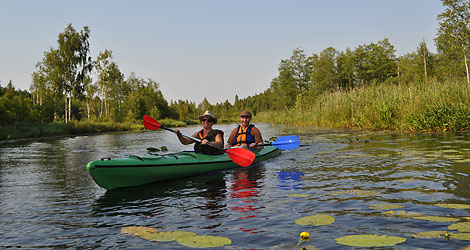 The Berezinsky Biosphere Reserve occupies a huge area of 131,785 hectares in Lepel District and Dokshitsy District (Vitebsk Oblast), and in Borisov District (Minsk Oblast).
The Berezinsky Biosphere Reserve occupies a huge area of 131,785 hectares in Lepel District and Dokshitsy District (Vitebsk Oblast), and in Borisov District (Minsk Oblast).
Today these pristine areas are inhabited by:
-
56 mammal species, including Europe’s Big 5 - European bison, moose, bear (one-third of the Belarusian population of bears), wolf, and lynx
-
234 bird species
-
34 fish species
-
16 to 17 species of amphibians and reptiles.
The rich flora of the reserve comprises over 2,000 plant species, 88 of them are included in Belarus’ Red Book of Endangered Species.
The Berezinsky Biosphere Reserve is also a special hydrographic area which marks the watershed between the basins of the Baltic Sea and the Black Sea. The Berezina, the longest river in Belarus, one of the Dnieper River tributaries, originates in local bogs. This is the river after which the biosphere reserve was named.
The hydrographic network of the Berezinsky Biosphere Reserve comprises 69 rivers with a total length of 280 kilometers and numerous streams which unite 7 lakes:
-
Palik (the largest one, 712 hectares)
-
Olshitsa
-
Plavno
-
Manets
-
Domzheritskoye
-
Moskovitsa
-
Postrezhskoye
Thanks to waterways which were used back in the days of the ancient trade route from the Varangians to the Greeks, the main historical landmark of the biosphere reserve - the Berezina Water System - was built in 1791-1805. This is an elaborate hydrotechnical system set up in woods and bogs. It enabled direct connection between the rivers of the Black Sea basin and the Baltic Sea basin. Six canals were built there along with fourteen sluices and six levees.
Merchants used the Berezina Water System to export ship timber, tar, resin, charcoal, fur, bread, and flax from Belarus and to import metals, goods, and food products to the country.
Over the years, the canals have shallowed, and the wooden hydrotechnical constructions got destroyed with time. However, they still attract interest as historical sites and tourist destinations. Apart from that, they have become the domain of local fauna: beavers, ducks, and otters.
Eco-tourism in Berezinsky: Nature Beauty, Adventure Sports and Mythology
 A variety of bike, horse, ski and hiking eco paths cross the major local landmarks. Berezinsky provides a variety of opportunities to explore bear trails, climb the viewing tower to savor a picturesque landscape, watch animals and birds, or take a fling in the rope park. Rafting amateurs are invited to try the route from the Varangians to the Greeks and enjoy a canoe trip along the Berezinsky water system.
A variety of bike, horse, ski and hiking eco paths cross the major local landmarks. Berezinsky provides a variety of opportunities to explore bear trails, climb the viewing tower to savor a picturesque landscape, watch animals and birds, or take a fling in the rope park. Rafting amateurs are invited to try the route from the Varangians to the Greeks and enjoy a canoe trip along the Berezinsky water system.
The Berezinsky Biosphere Reserve also offers some of the adrenaline-pumping excursions, which will be to the liking of outdoor enthusiasts. Equipped with water boots, binocular glasses and lights, guided groups are taken to observe grouse lekking. It is important to note that traveling around Berezinsky is allowed only as part of a guided tour.
Belarus’ only station of baseline monitoring is located in Berezinsky, where visitors can try their hand in meteorology and weather forecasting.
Belarus’ first mythology tourism center was opened in Berezinsky in 2016. Strolling along the path of myths (a mystical atmosphere is created by a special system of visual and sound effects), meeting the reserve’s traditional hero Bolotnik (the spirit of wetlands) and also other spirits Khapun, Kaduk, Kikimora, and Zyuzya, watching singing mermaids and braving a labyrinth – such mythical excursions will appeal to children and adults alike. Another tourist attraction is the mythological museum that takes you on a journey around the World Tree.
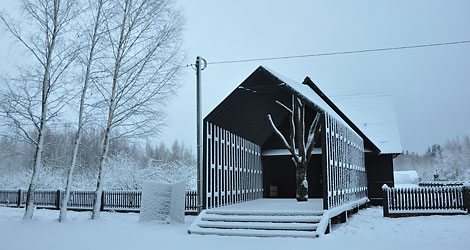 The Museum of Nature can tell a lot about the animals that live in the reserve. The exposition displays different species of mammals, birds and fish in full size.
The Museum of Nature can tell a lot about the animals that live in the reserve. The exposition displays different species of mammals, birds and fish in full size.
The forest zoo features a variety of the Belarusian fauna, including bear, bison, deer, elk, roe, wild boar, raccoon dog, fox, wolf and lynx. The local zoo is also home to different species of birds. Storks, viewed as the symbol of happiness in Belarus, make nests there, while the local pond is inhabited with gracious swans.
Travel Guide and Accommodation
The Central Farmstead of the Berezinsky Biosphere Reserve is located 125km away from Minsk, 140km away from Vitebsk and 37km away from Lepel.
It is easy to get to the Berezinsky area by a route taxi van Minsk-Lepel or commuter buses Minsk-Vitebsk, Minsk-Novopolotsk, Minsk-Polotsk, and Minsk-Lepel. The bus stop “Turning to Domzheritsy” (Minsk-Vitebsk motorway) is 3km away from the central farmstead.
There are a number of choices of accommodation in the Berezinsky Biosphere Reserve:
-
Plavno and Serguch hotels;
-
Nivki tourism center;
-
Bereshche eco-tourism center;
-
guest houses Palik, Olshitsa, Zarechnoye, Domzheritskoye Lake;
-
Fisherman and Hunter House


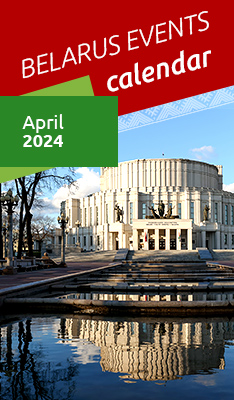




 print version
print version make home page
make home page add to bookmarks
add to bookmarks